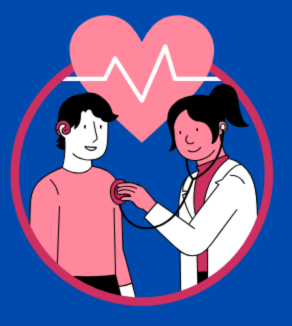Parkinson’s disease (PD) is a neurological condition that worsens over time and impairs movement. Millions of individuals worldwide suffer from this complicated ailment, which is becoming more common as populations get older.
PD becomes worse with time. Although there isn’t a cure, medications and therapies may alleviate symptoms. Tremors, excruciating muscle contractions, and difficulties in speaking are typical symptoms.
There is a significant rate of disability and care requirement associated with Parkinson disease. Dementia attacks many Parkinson’s disease patients.
Although the disease primarily affects the elderly, it can sometimes strike younger people. More males than women are impacted than women.
Symptoms of Parkinson’s Disease :
The symptoms of Parkinson’s disease can vary from person to person and typically develop gradually over time.
The cardinal motor symptoms of Parkinson’s disease include:
- Tremors
- Slowness of movement (Bradykinesia)
- Rigidity
- Impaired balance and coordination
Additional related symptoms may include the following:
- cognitive impairment
- mental health disorders
- dementia
- sleep disorders
- pain
- sensory disturbances.
Causes of Parkinson’s Disease:
The exact causes of Parkinson’s disease is still unknown, a mix of environmental and hereditary variables are thought to be involved.
Although family types of Parkinson’s disease have been related to certain genetic abnormalities, most cases of the disease are sporadic. Parkinson’s disease risk may also be raised by environmental variables like viral infections, head trauma, and toxin exposure.
- Gender: Parkinson’s disease is 1.5 times more common in men than in women.
- Race: Compared to Black or Asian individuals, white people have a higher prevalence of Parkinson’s disease, per research.One explanation for an increased risk could be geographic location.
- Toxins: An increased risk of Parkinson’s disease may result from exposure to specific toxins.
- Family History: A person’s risk of developing Parkinson’s disease is increased if they have close family members who have the condition.
- Age: It commonly manifests between the ages of 50 and 60. It only happens in roughly 4% of cases before the age of 40.
- Head Injury: Parkinson’s disease may be more common among people who have had head trauma.
Diagnosing Parkinson’s Disease :
Parkinson’s disease diagnosis can be difficult, especially in the early stages when symptoms may be mild. Since there is no known test for Parkinson’s disease, a complete medical history, a physical examination, and an evaluation of symptoms are used to make the diagnosis. To rule out other disorders that mirror Parkinson’s disease, imaging procedures like dopamine transporter (DAT) scans or magnetic resonance imaging (MRI) may be utilized.
Pathophysiology of PD:
Parkinson’s disease is characterised by the degeneration of dopamine-producing neurons in the substantial nigra, a region of the brain involved in movement control. Dopamine is a neurotransmitter that plays a crucial role in regulating movement and coordination. As dopamine levels decrease, the communication between brain cells becomes impaired, leading to the motor symptoms associated with Parkinson’s disease.
Medication and drugs for Parkinson’s disease :
Although there isn’t a cure for Parkinson’s disease at this time, treatment tries to make life better by reducing symptoms. Levodopa, dopamine agonists, and monoamine oxidase inhibitors are a few examples of medications that can raise dopamine levels in the brain and reduce motor symptoms.
Levodopa – The most widely prescribed drug for Parkinson’s disease (PD) is levodopa/carbidopa, a combo treatment that raises dopamine levels in the brain.
MAO Inhibitors – The monoamine oxidase B enzyme is inhibited by MAO-B inhibitors. The brain’s supply of dopamine is broken down by this enzyme. Examples of MAO-B inhibitors are rasagiline (Azilect) and selegiline (Eldepryl).
Dopamine agonists – These have the ability to replicate dopamine’s effects on the brain. Although they are not as effective as levodopa, they can serve as a stand-in drug when levodopa is not as successful.
PD Surgery :
If medicine is not effective in controlling the symptoms, surgical procedures such deep brain stimulation (DBS) may be suggested in more advanced cases.
Deep brain stimulation (DBS)– The practice of deep brain stimulation (DBS) involves the implantation of electrodes in particular brain regions by surgeons. Pulses are sent out by a generator that is attached to the electrodes to help lessen symptoms.
Physical therapy, occupational therapy, and speech therapy can all be very important in the management of Parkinson’s disease in addition to medicine and surgery. With the support of these therapies, people with Parkinson’s disease can prolong their independence and quality of life by enhancing their mobility, balance, and communication abilities.
FAQ for Parkinson’s Disease :
Q. What is Parkinson’s disease?
A. Parkinson’s disease is characterised by the degeneration of dopamine-producing neurons in the substantial nigra, a region of the brain involved in movement control.
Q. How Parkinson’s disease is diagnosed?
A. The Parkinson’s disease Diagnosis can be challenging, particularly in the early stages when symptoms might not be severe. A thorough medical history, a physical examination, and an assessment of symptoms are utilized to diagnose Parkinson’s disease because there is currently no known test for it.
Q. What causes of Parkinson’s disease?
A. Parkinson’s disease is thought to be caused by a mix of environmental and genetic factors, while the exact cause is still unknown. Although the majority of Parkinson’s disease cases are random, hereditary versions of the disease have been associated with certain genetic abnormalities. Parkinson’s disease risk may also be raised by environmental variables such exposure to chemicals, head trauma, and viral infections.
